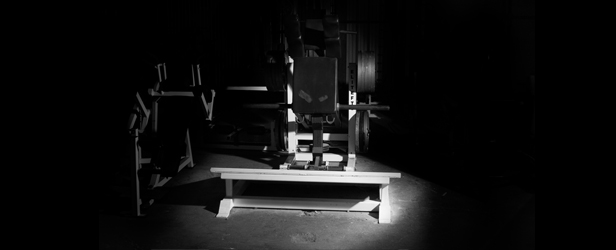
I don’t think you would find many serious, competitive-level bodybuilders who didn't think that the barbell squat was one of the most important exercises that contributed to their success. As one of the three competitive lifts, powerlifters must perform the barbell squat.
Over the past eighty years of weight training activity, the squat has been the centerpiece of most programs utilized by anyone seeking enhanced muscular size and strength. Yet as goals in the gym are reached, many who have successfully utilized the barbell squat frequently seek substitutes for the revered exercise. Many athletes who have suffered injury or have leverage factors that limit their ability to comfortably or effectively perform the barbell squat have sought alternate means to affect the local, lower extremity musculature and “overall physiological system” so they can reap the benefits stimulated by barbell squats. Perhaps no other exercise is simultaneously so revered and reviled.
No one who has spent more than passing time in a serious, hard-core facility can deny the benefits of doing squats heavily and/or intensely. Many long time, expert, I-do-this-for-a-living trainers and trainees will argue that the barbell squat is the most important movement one will ever perform in a gym environment. Yet many well-intentioned athletes can't or won't place a heavily loaded barbell on their backs or shoulders and then squat. Some have legitimate disadvantages, reasons, or explanations that won't allow them to benefit from squatting but are willing to put the time and effort into garnering those benefits. Despite the “you’re a punk if you don’t do this” attitude of some strength coaches and lifters toward those who don't squat, many individuals have physical limitations due to previous injury or leverage disadvantages that won’t allow for effective squatting.
If one’s bodily proportions relative to back, femur, and leg lengths among other characteristics won't allow one to express his true level of strength and/or utilize weights heavy enough to be effective enough to produce strength increases, one must seek an alternative. Decades ago, Tom Kinney of TK Star Equipment in the northern suburbs of New York City developed the first power squat machine and, through a number of innovative upgrades, eventually sold a very effective, popular squat machine that was copied by perhaps twenty other manufacturers. Even today, there are quite a few of these on the market but few are effective and safe. Shearing forces on the patella tendon, excessive low back compression, and brachial plexus irritation seem to be part and parcel of power squat machine use. Thus first and foremost, one needs a power squat machine with biomechanical factors that equate to a variation in resistance, an absence of damaging forces as aforementioned, and a relative lack of discomfort for the trainee.
Once you can present a machine that is both functional and useable, it has to withstand heavy use and constant abuse in a hard-core training environment and serve the majority of users well. The elitefts™ Power Squat Machine, among many that we have tried with our male and female competitive lifters, professional athletes, Olympic Games competitors, and younger high school and collegiate trainees, fits the bill on every count.
Doing squats properly isn't comfortable and isn’t meant to be, but the elitefts™ machine is as comfortable as one will get while squatting. The entire movement is smooth and “natural” unlike most other similar machines. For those who have difficulty achieving a very low bottom position in the squat due to a relative lack of flexibility or leverage limitations, this power squat piece will very much eliminate that problem. Those new to or relatively inexperienced in the barbell squat can first learn or reinforce many of the squat lessons on the machine and do so with confidence. Balance isn't an issue, hesitation or lack of confidence in going to the bottom position isn't a problem, and a prolonged learning curve is avoidable with the elitefts™ Power Squat. I have always decried the use of bands and chains as a “poor man’s way of achieving some variable resistance,” but on the power squat machine, the use of bands (and the very efficient way the bands operate on the piece) add a factor of difficulty and the need for more “finishing strength” on every rep. For our larger athletes including Strongman competitors, powerlifters, and football players in the 290- to 330-pound range, the wide rubber covered platform provides a safe and stable base to train on. One of our Strongman competitors, upon first viewing our elitefts™ Power Squat, quipped, “Doc, that’s not a squatting platform. That’s a dance floor!” Certainly it is large enough for any athlete to train properly on. In summary, this has been a valuable and enjoyable addition to our very extensive collection of equipment.
A mistake that many coaches and trainees make in utilizing the power squat machine as part of their programs is to assume that it is somewhat “less” than a barbell squat. “Wasted,” “crippled out,” and variations of these complaints of acute and limiting muscle soreness are constant within 24–48 hours of squatting on the power squat, more so than with barbell squats. Yes, it can be an adjunctive piece that is injected into the routine as a change of pace or as a substitute when one is in-season for his competitive sport or competitive lifting season. However, if used once per week during the heaviest of training cycles as a “back off” to the barbell squat, a follow-up after deadlifts, or the primary squatting movement of the week, the elitefts™ Power Squat can and, for our group, has proven to be an extremely effective and intense means of squatting for both maintaining and improving the barbell squat..
Can you tell we like it a lot?








